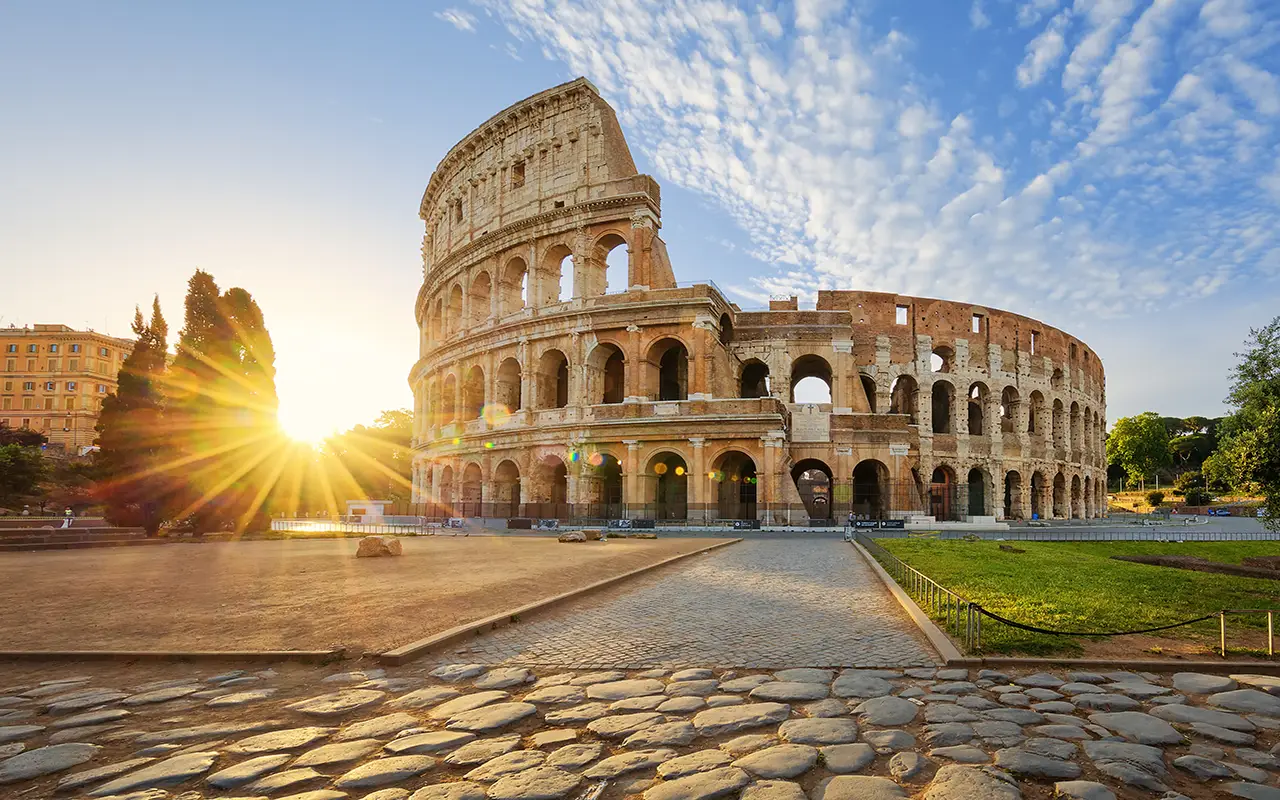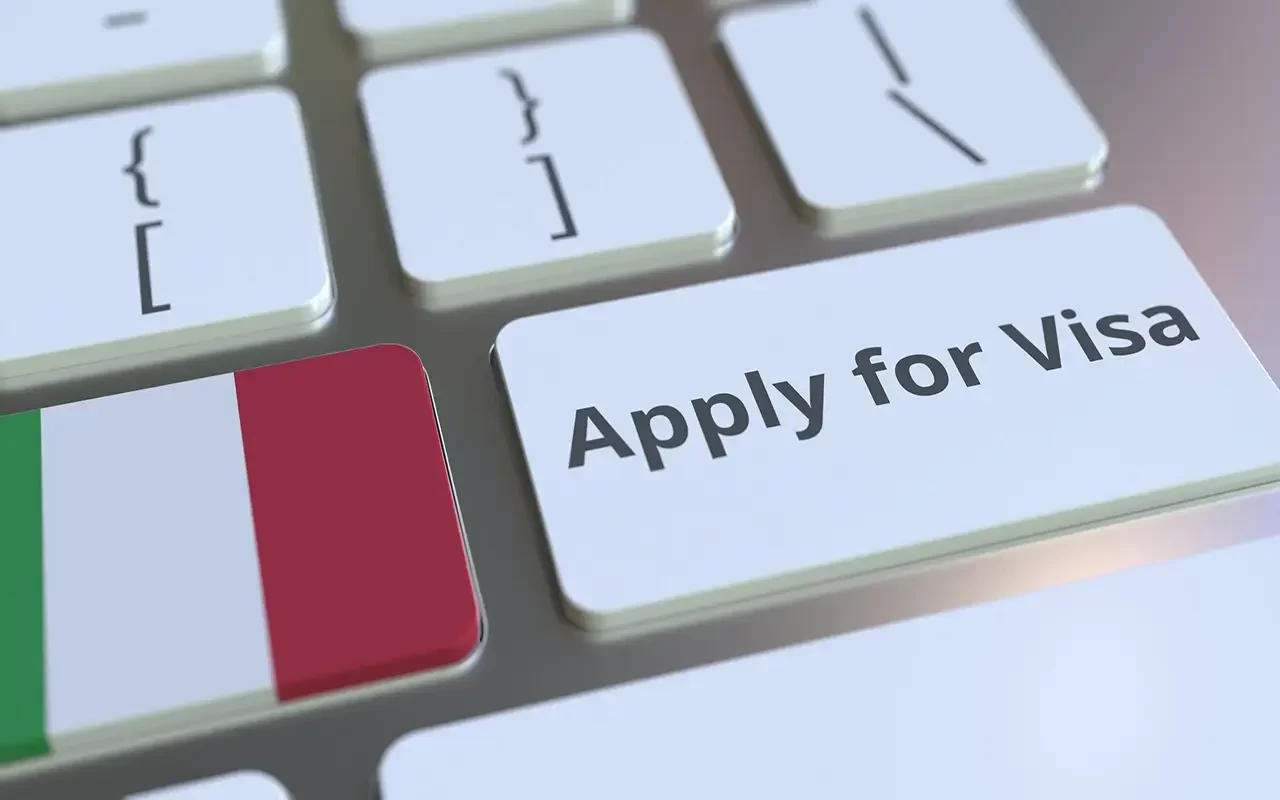
Table of Contents
Overview of Italy
A peninsula extending into the Mediterranean, Italy is bordered by France, Switzerland, Austria, and Slovenia. One of the most visited countries in the world for its art, cuisine, and culture, Italy boasts more UNESCO Heritage Sites than any other European state. Many visitors travel to Italy for an in-person look at the fruits of the Renaissance- the 14th century-onward explosion of artistic and scientific achievement led by painters and sculptors like Leonard da Vinci, Michelangelo, and Raphael, whose works still adorn the country’s magnificent cathedrals, palaces, and public works. Still others are drawn even further back, to the time of Julius Caesar, Marcus Aurelius, and Cicero, best reflected in Italy’s ancient capital of Rome. The seat of the Roman Republic and Roman Empire, Rome holds thousands of years of history. Some of its top sites include the Colosseum, where the gladiators raged, the Pantheon, with its iconic circular dome, and the Trevi Fountain, into which visitors can throw a coin, for good luck. Visit Vatican City, the seat of the Roman Catholic Church, home to both St. Peter’s Basilica and the Pope. The Vatican Museums contain innumerable works of art from the Renaissance, including the Sistine Chapel, with its famed ceiling painted by Michelangelo. Outside the capital, Italy’s 20 regions offer a wide variety of sites, activities, and cuisine; each has its own take on the pasta, pizza, and gelato that define Italian food. Explore Tuscany, Italy’s region of vineyards, olive trees, and undulating hills dotted with rustic farmhouses, and see the leaning tower of Pisa. The Tuscany capital of Florence boasts both the Uffizi Gallery and Michelangelo’s statue of David. In Venice, tourists can hire a gondolier to explore its medieval waterways and its canal-side palazzos. Relax on the Amalfi Coast, with its chic beaches on the Tyrrhenian Sea. Visitors to the southern city of Naples can sample pizza in its birthplace and tour Mount Vesuvius; the volcano that famously destroyed Pompei. Visit the islands of Sicily, Italy’s southernmost region and the largest island in the Mediterranean. To the north, the region of Lombardy is home to the Italian Lake District, with its pristine cool waters ringed by mansions and mountains, as well as Milan, the sleek capital of Italian Industry and fashion. Further north, bordering Austria, Italy’s alpine landscape boasts some of the best skiing in the world. Italy signed the Schengen Agreement in 1990, becoming part of the Schengen area in 1997.
Italy Schengen Visa Eligibility
Schengen visa eligibility for Italy includes third-country nationals from the following states, who are excluded from visa-free to Italy/the Schengen area, and are therefore eligible to apply for a Schengen visa to Italy:
|
1. AFGHANISTAN |
53. LAOS |
|
2. ALGERIA |
54. LEBANON |
|
3. ANGOLA |
55. LESOTHO |
|
4. ARMENIA |
56. LIBERIA |
|
5. AZERBAIJAN |
57. LIBYA |
|
6. BAHRAIN |
58. MADAGASCAR |
|
7. BANGLADESH |
59. MALAWI |
|
8. BELARUS |
60. MALDIVES |
|
9. BELIZE |
61. MALI |
|
10. BENIN |
62. MAURITANIA |
|
11. BHUTAN |
63. MONGOLIA |
|
12. BOLIVIA |
64. MOROCCO |
|
13. BOTSWANA |
65. MOZAMBIQUE |
|
14. BURKINA FASO |
66. NAMIBIA |
|
15. BURMA/MYANMAR |
67. NAURU |
|
16. BURUNDI |
68. NEPAL |
|
17. CAMBODIA |
69. NIGER |
|
18. CAMEROON |
70. NIGERIA |
|
19. CAPE VERDE |
71. NORTH KOREA |
|
20. CENTRAL AFRICAN REPUBLIC |
72. OMAN |
|
21. CHAD |
73. PAKISTAN |
|
22. CHINA |
74. PAPUA NEW GUINEA |
|
23. COMOROS |
75. PHILIPPINES |
|
24. CONGO |
76. QATAR |
|
25. COTE D’IVOIRE |
77. RUSSIA |
|
26. CUBA |
78. RWANDA |
|
27. DEMOCRATIC REPUBLIC OF CONGO |
79. SAO TOME AND PRINCIPE |
|
28. DJIBOUTI |
80. SAUDI ARABIA |
|
29. DOMINICAN REPUBLIC |
81. SENEGAL |
|
30. ECUADOR |
82. SIERRA LEONE |
|
31. EGYPT |
83. SOMALIA |
|
32. EQUATORIAL GUINEA |
84. SOUTH AFRICA |
|
33. ERITREA |
85. SOUTH SUDAN |
|
34. ETHIOPIA |
86. SRI LANKA |
|
35. FIJI |
87. SUDAN |
|
36. GABON |
88. SURINAME |
|
37. GAMBIA |
89. SWAZILAND |
|
38. GHANA |
90. SYRIA |
|
39. GUINEA |
91. TAJIKISTAN |
|
40. GUINEA-BISSAU |
92. TANZANIA |
|
41. GUYANA |
93. THAILAND |
|
42. HAITI |
94. TOGO |
|
43. INDIA |
95. TUNISIA |
|
44. INDONESIA |
96. TURKEY |
|
45. IRAN |
97. TURKMENISTAN |
|
46. IRAQ |
98. UGANDA |
|
47. JAMAICA |
99. UZBEKISTAN |
|
48. JORDAN |
100.VIETNAM |
|
49. KAZAKHSTAN |
101.YEMEN |
|
50. KENYA |
102.ZAMBIA |
|
51. KUWAIT |
103.ZIMBABWE |
|
52. KYRGYZSTAN |
Third party nationals from the following entities/territories are also required to apply for a Schengen visa: KOSOVO and the PALESTINIAN AUTHORITY.
Required Documents for Italy Visa
All documents required for your Italian Schengen visa must be completed/translated into Italian or English. Applications for all Itali Schengen visas will contain the following Basic Required Documents:
- Valid passport
- Passport sized photos
- Application form
- Fingerprints (biometric data)
- Travel medical insurance
- Visa Fee
- Materials related to your trip:
- Reason for visit
- Where you will stay (accommodation)
- How you will fund your trip (finances)
- Proof that you will leave Italy before your visa becomes invalid/expires. This is often in the form of a paid roundtrip plane ticket (proof of return).
Note: For more information on what to include in your application, including a detailed description of required materials, please see: Basic Required Documents. Please note that you may have to submit additional Italian Schengen visa supporting documents related to your specific purpose for traveling.
Italy Schengen visa fees
The standard Italian Schengen visa fee for an adult is 80 Euros. Certain types of applicants (most students, children under 6) are exempt from all visa fees. To get a Schengen visa for Italy, you will likely have to submit a service payment with your visa application-this is a separate cost from the visa fee. Please note that these fees are non-refundable in the case of visa rejection.

How to Apply for an Italy visa: Steps
- Step 1: Determine your Purpose for travelling to Italy, which will determine the Type of visa you should apply for.
- Step 2: Determine how many Entries to Italy/the Schengen area you need.
- Step 3: Gather your Required Documents.
- Step 4: Schedule a Schengen Visa appointment (if applicable).
- Applications for Italian Schengen visas must almost always be submitted in person. Additionally, you may have to schedule an appointment in order to submit your application. Alternatively, you may be able to drop off your application without prior arrangement, so long as you do so during normal operating hours. Contact your consulate/visa center directly to find out if you need to schedule an appointment in order to submit your application.
- Step 5: Fill out your application.
- Different consulates/visa processing centers provide different ways of accessing applications.
- depending on where you are applying from, you may be able to apply online through Italy’s E-application system here. Complete and print out the online form.
- Alternatively, you can download, complete, and print out this standard Schengen visa online form, available here. In both cases, you will submit your forms to whichever consulate/visa center you are applying through.
- More information on how to apply for an Italian Schengen visa can be found via this link, by entering your nationality and other information pertaining to your visa.
- Different consulates/visa processing centers provide different ways of accessing applications.
- Step 6: Pay the application fee.
- Step 7: Submit your Italian Schengen visa application (at least 15 days prior to travelling, not before 6 months).
- Different Italian consulates/processing centers have different procedures for submitting applications. In almost all cases, applications must be submitted in person to the consulate/center you are applying through.
- When you submit your application, you will likely also be asked to submit biometric data (fingerprints). Children younger than 12 years are likely exempt from having their fingerprints collected. If you have previously submitted fingerprints (within the last 59 months), you likely will not need to resubmit them.
- Please note, after submitting your application, you may be asked to return at a later date for a personal interview to provide further information/materials related to your trip.
When to Apply
Submit your application at least 15 days prior to the day you intend to travel, and no earlier than 6 months before you leave.
Where to Apply
Applications for Schengen visas to Italy should be submitted at either an Italian Consulate/Embassy or a visa application center that has a relationship with Italy.
You should ideally lodge your application for an Italian Schengen visa in the country where you legally reside/are a citizen.
In countries where there is no Italian consular presence, applications may be lodged via the consulate of a Schengen state representing Italian consular interests.
Processing Time for Italy Schengen Visa
The Italian Schengen visa processing time is generally 15 days, although it can take longer in certain cases.
If your Italy visa was approved:
Collect your visa and make sure the information it contains is valid and complete.
If your Italy visa was denied:
If you receive a Schengen visa rejection for Italy, you have the right to an appeal, within 60 days of receiving your rejection.
Begin this process by picking up your standard issued-visa refusal form, which describes why your request was denied, and explains the detailed steps of the appeal process.
You must likely pay an appeal fee, which is generally non-refundable regardless of the outcome of the appeal (positive or negative).
Your appeal will be considered by the Tribunale Amministrativo Regionale (T.A.R.) (regional administrative court) of Lazio.
Finally, once you obtain your Schengen Visa for Italy, please note the following:
Your visa may be revoked if you do not notify the Italian Consulate/visa application center of any changes to your trip itinerary that occur after you have submitted your application.
Being approved for an Italian visa does not guarantee you entry to either Italy or the general Schengen area – you can still be refused entry to both places upon arrival.
Alternatively, you may have to show additional documents regarding your finances or accommodation in order to enter Italy/the Schengen area.
FAQ about Italy Schengen Visa
How long does it take to process an Italy visa?
The official processing time for Italian visas (and for Schengen visas to all Schengen countries) is 15-60 days.
How to fill Italy visa application form?
All applicants for Schengen visas must fill in a basic application form. Some countries, like Italy, offer an electronic version of that form via an official national visa website. Begin the process to fill out the form by accessing the Italian portal here: https://e-applicationvisa.esteri.it/?L=en-GB. Follow the directions to fill out the form (note that the directions are available in Italian English, Russian, and Chinese). Create an online account to fill in the form, which contains basic questions about you (the traveler) and your upcoming trip. Once you have filled out the form online, you will submit it electronically. In addition, you will print out a physical copy, which you will bring to the relevant Italian Mission *(Italian Embassy/Consulate or affiliated visa application center).
Who needs the Italy visa?
Most people need a visa to travel to Italy, as most people are from countries which do not have visa free access to the Schengen area. If you are considering travel to Italy, you will need to determine whether your country grants you visa-free access to the zone. If not, you will need to apply for a visa in order to visit Italy and any of the other Schengen member states.

